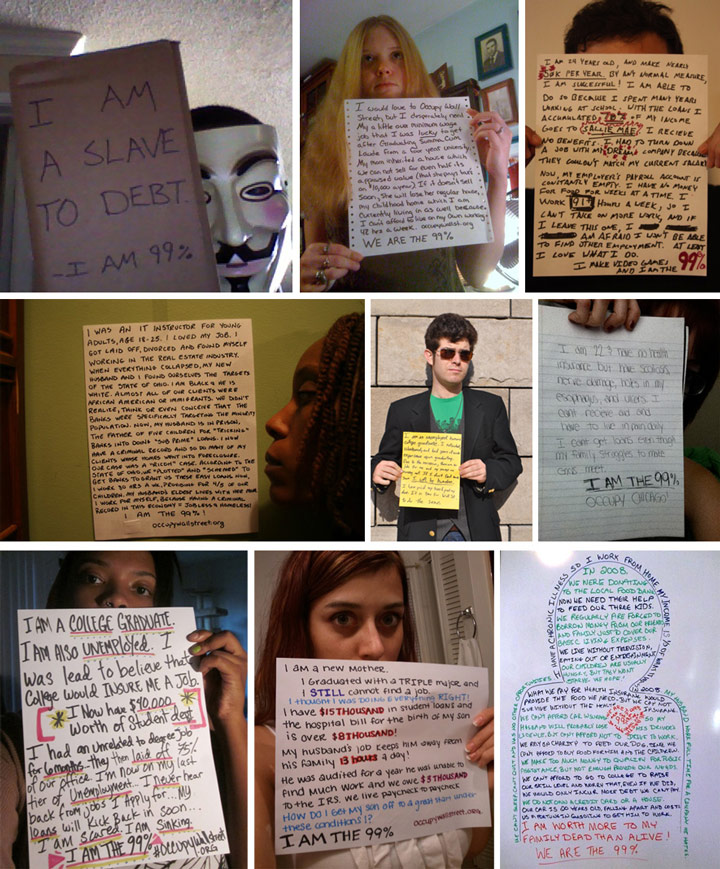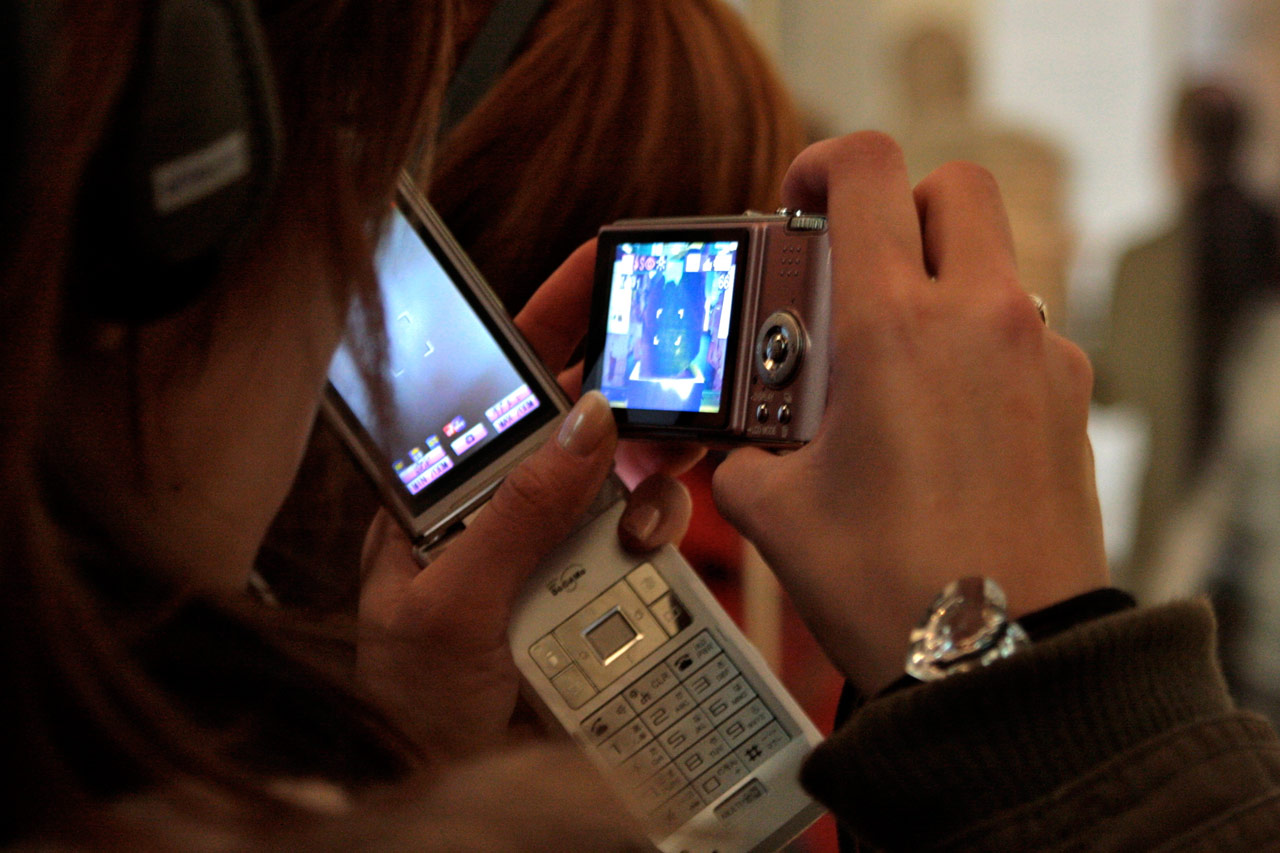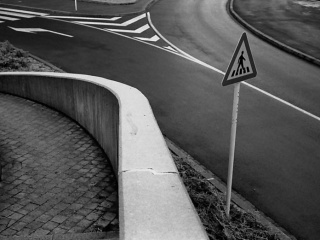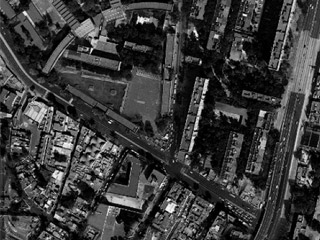From the fluid image to connected photography (1/3)
Conversational image: new uses of digital photography
André Gunthert, "Conversational image: new uses of digital photography.", Etudes photographiques, n° 31, printemps 2014.

Fig. 1. Collection of visual messages from the collaborative activist blog "We are the 99%", October 2011.
Directed by Steven Spielberg and based on a novel by Philip K. Dick, the movie Minority Report released in 2002 is renowned for the credibility of its predictions about technology. It depicts a universe in 2054 based on the propositions of a group of experts, and it is famous for having foreseen the use of tactile interfaces. In addition to the visualization of mental images, it predicts the generalization of optical identification for monitoring or advertisement profiling purposes.
The most important part of this forecasting exercise is how its near-sightedness is even more remarkable in face of what has become, shortly after, common in the visual practices of developed countries. In the film, the private uses of the image are limited to traditional printed photographs, three-dimensional films, and interactive video conversations.
Some years later, these expectations seem to have been exceeded long ago. Instead of half a century, man only needed three to five years to have available on a daily basis video communication tools (Skype 2.0, 2005) or tactile interfaces (Apple iPhone, 2007). In contrast, no one would have imagined the rise of multimedia messaging services, the diversity of images or visual conversations in social networks. The present has left the future behind, and nowadays Minority Report seems trapped in a Foucauldian perception of the image as an instrument of control and domination.
The unforeseen uses, much more avant-gardist than anything that could have been imagined at the beginning of the 21st century, have turned upside-down our visual practices and have evidently found a place of their own. Yet, its unpredictable nature provides an invaluable historical indication. Quite the opposite of what happened to the automobile, aviation, or television —that fell into an extension of horse carriages, navigation, or radio— the development of innovations such as photography, cinema, or records depends on proprietary mechanisms where the choice of users has had a major role. The same holds true for interactive images, an unexpected product of the encounter of the digitalization of visual contents and the documented interaction.
From the fluid image to connected photography
At the beginning of the 1990's, the digitalization of photography was described both as a revolution and as a catastrophe. By prolonging the traditional technical approach, many specialists see in the transition to pixels the ruin of the indexicality and a sign of the end of our trust in the truth of images 1 .
At one time writing transformed the language into information, granting it irreplaceable properties of preservation, reproduction, or transmission. Now, by reducing the images' materiality, digitalization grants them a new plasticity and mobility. In the form of files easy to copy or manipulate, the iconic object becomes a fluid image.
This first stage of digital transition has important consequences in the industry of images: the disappearance of laboratories, simplification of procedures, multiplication of numerical databases, and rise of prices. However, in spite of a considerable technological jump, we have been able to observe a remarkable continuity in the forms and uses. For twenty years the digital transition has only affected the edges of visual practices. Contrary to the most somber predictions, journals have continued publishing illustrated reports and parents still take pictures of their children. Just as an automobile that traded a thermal motor for an electrical one, photography has preserved its most essential functions. There has not been a catastrophe of what is visible but, more mundanely, an acceleration of the rationalization of the field 2.
Following the example set in Minority Report, many specialists expected that this rise of new visual tools came with a shift to animated and more seductive images, and a loss of interest for motionless images. The practice of amateur video has certainly seen an important progression 3.
Nevertheless, the motionless image continues to be the most exchanged content.
It is not easy to compare in absolute terms the amount of photos and videos shared in social networks, for seconds are usually counted up in broadcasting hours. Facebook has stopped providing regular information regarding animated images, which suggests a weak increase. In 2010, at a time where social networks had half a billion members, the figures available indicated 2.5 billion of downloaded photos per month but only 20 million videos, that is 125 times less (the difference of point of view of the amateur production increases if we consider the fact that shared videos constitute a more important proportion of repeated material while photo is richer in self-produced contents).
It seems that the main advantage of the motionless image over the video is its fluidity. Video is at a disadvantage due to the weight of its files, the download time, and the restriction of formats. Not being as universal as a photo, a video can only be envisioned in an environment comprised by an appropriate reading device. In contrast, a JPEG file or an animated GIF4 have the advantage of being able to appear in any environment, in a computer or a platform, a mobile or a tablet.
Between 2008 and 2011 the landscape changed unexpectedly. It came not in the form of a camera, but a hand-held telephone produced by a computer brand. The Apple's iPhone, conceived by Steve Jobs to give major access to web features 5 (especially the 3G version available since 2008), foretells an essential evolution: that of connected photography6.
In every developed country, it is not long before the sales of cameras were surpassed by those of cell phones. In 2011, while 4.6 million of cameras were being commercialized in France (two times more than in the late 1990's) smartphones reached 12 million units 7.
The adaptation of photography to mobile telephony existed since the first camera phones were available in Japan since the year 2000. But the power conferred to this convergence by the 3G norm (UMTS), comparable to the transition from modem to broadband, opens the way to the full implementation of visual practices.
This evolution turns a smartphone into a universal camera. In the past, carrying a camera implied anticipating an occasion to take pictures. In contrast, the telephone that we carry for communicative tasks or for fun, turns photography into something that is always available 8.
The moment to take a photograph belongs to a range of codified events, outside of which taking pictures is not tolerated9.
The only exception being tourists and the justification of exoticism authorize an extreme use of a camera. By granting the possibility of being recorded to every moment in life, a cell phone transforms each one of us into a daily tourist, ready to take a picture at any time. This new skill is manifested mainly by the publication in the press of amateur photos or videos of major tragedies or accidents (the London attacks in 2005; the campus shootings in Virginia Tech in 2007; the plane crash in Hudson River in 2009, etc.).
But the metamorphosis does not end with the production of images; connected photography results in the alliance of the smartphone and communication tools, instant messages, or social networks, where the image can be immediately transferred through elemental operations. Even if this union is but a fraction of amateur practices, it imposes itself as an emblematic stage: the symbol of a second evolution of digital images.

Fig. 2. Photograph at a museum. A tourist uses at the same time a camera and a camera phone, depending on what she wishes to achieve or convey in the image (British Museum, London, 2008, priv. coll.).
Being able to share in real time a photo to a friend or group of friends —an ability once reserved only to some wireline services— modifies thoroughly its uses. During this initial period, the quality of pictures offered by smartphones regressed in comparison to that proposed by compact cameras. In these terms, choosing a cell phone rather than a camera or the strong progression of production in this format indicated that users find an advantage to connected photography. The lack of quality is largely made up by the utility of new uses of the image, particularly by the increase in the ability to exhibit them through social networks.
Facebook, the vastest of them, which was made public in 2006, improved considerably its interface to present images between 2009 and 2011, making it easier to integrate visual files and offering a better visibility. From this point forward, taking a picture is no longer enough, what counts is being able to show it, discuss it, and share it. As the first place of exposition of self-produced photographs, Facebook logically became the most important collection of images in the world (over 250 billion photos downloaded in September of 2013 10 ). In spite of the recent loss of media achievements, this will always be the main historical site of spreading regarding connected images.
Being able to share your own photographs or to discuss them was already possible at Flickr since 2004. But the specialized platform continues to be a space for discussion centered on images. The breach created by Facebook was to propose a general environment equipped with a maximum of features, structured not around specific interests but, more fundamentally, around the interaction between real people. As Pierre Bourdieu had noticed, the uses of amateur photography continue to be mainly social 11. In Facebook, discussion focuses on any aspect of existence. Images are not mobile mainly due to aesthetic qualities but because they document life, take part in the game of self-representation, and are useful as reference documents.
This revolution of diversification modifies fundamentally the ancient paradigm of photography based on technique, the supremacy of taking pictures, the materiality, and the objectivity of the image. While the visual recording used to form an autonomous universe strongly identified, what characterizes it nowadays is its integration to the gist of multipurpose systems. The delay for camera manufacturers, who objected to transform their materials into connected tools and kept the communicative features to a minimum12 is meaningful to the extent of the change. For the first time in history, photography has become a niche practice at the core of a more vast universe: that of electronic communication.
We can compare this integration with the process of miniaturization that affected clock making between the 15th and the 19th century, taking the timepieces from bell towers of churches to the interior of salons, and to the pocket of a piece of clothing. By gaining availability at each stage, the time function evolves and transforms itself:
"The small time pieces that, as a result had, domestically or personally, a whole different quality and sense than public and monumental mechanisms. The possibility of a use both private and universal established the bases of a way to control time, in contrast to the merely obeying it", explains historian David Landes13.
Having become one of many components in the universe of communication, is photography not at risk of disappearing? Quite the contrary. If photography integrates blends with other devices, it will be inconceivable to think of a communication tool without a camera, or a digital environment lacking a visual display. In every connected object the photographic feature is independent; it has gained in universality and adaptation, fulfilling to its best its promise of democratization of the visual production. As with the clock, the integration of photography, which is only beginning, continues announcing that it will go beyond its original function. Hereafter, the generalization of the production of images announces a revolution of its uses.
1 William J. Mitchell, The Reconfigured Eye. Visual Truth in the Post-Photographic Era,Cambridge, London, MIT Press, 1992; Pierre Barboza, Du photographique au numérique. La parenthèse indicielle dans l'histoire des images, Paris, L'Harmattan, 1996.
2 Sylvain Maresca, Dominique Sagot-Duvauroux, "Photographie(s) et numérique(s). Du singulier au pluriel" (memo at symposium "Travail et création artistique en régime numérique", Avignon, 27 may 2011), La vie sociale des images, 5 may 2011 (http://culturevisuelle.org/viesociale/2791).
3 Out of 100 people aged 15 and over, 14 declared having made movies or videos in 1997 vs. 27 in 2008, an increase by almost 2-fold; Olivier Donnat, Les Pratiques culturelles des Français à l'ère numérique. Enquête 2008, Paris, La Découverte, 2009, p. 190. Confirmation of determination through fluidity: short-video formats have experienced the strongest development.
4 Proposed in 1991, the JPEG format (Joint Photographic Expert Group) is a compressed format used for most motionless images on line. The animated GIF (part of the public domain since 2004) allows to post in the same context a looped sequence of images, joined in a same file.
5 Walter Isaacson, Steve Jobs Trans. by Dominique Defert and Carole Delporte. Paris, Lattès, 2011. p. 529-539.
6 Edgar Gómez Cruz, Eric T. Meyer, "Creation and Control in the Photographic Process. iPhones and the Emerging Fifth Moment of Photography", Photographies, 5/2, 2012.
7 "The life cycle of a photograph in the digital era", Ipsos survey 2011 (communication SIPEC September 2011).
8 Nancy Van House et al., "The Uses of Personal Networked Digital Imaging. An Empirical Study of Cameraphone Photos and Sharing", Extended Abstracts of the Conference on Human Factors in Computing Systems (CHI 2005), 2005, ACM Press, p. 1853-1856.
9 "In the eyes of the peasant, the city-dweller is the one who succumbs to a sort of perceptual 'anything goes-ism'; and this attitude appears incomprehensible to him because he refers to an implicit philosophy according to which only certain objects, on certain occasions, are worthy of being photographed", Pierre Bourdieu, "The Social Definition of Photography", Un art moyen. Essai sur lesusages sociaux de la photographie, Paris, Minuit, 1965, p. 117.
10 « Every day, there are more than 4.75 billion content items shared on Facebook (including status updates, wall posts, photos, videos and comments), more than 4.5 billion "Likes", and more than 10 billion messages sent. More than 250 billion photos have been uploaded to Facebook, and more than 350 million photos are uploaded every day on average », A Focus on Efficiency, Facebook/Ericsson/Qualcomm whitepaper, 16 September2013, p. 6(en línea: https://fbcdn--dragon-a.akamaihd.net/hphotos-ak-prn1/851575_520797877991079_393255490_n.pdf ).
11 Pierre Bourdieu, "La définition sociale de la photographie", op. cit., p. 108-138.
12 Samsung, the main competitor of Apple in terms of smartphones, proposed in 2012 the first "smart cameras" equipped with Wi-Fi transmitters, the variety of NX hybrid and the EX2F, a compact expert. That same year, Nikon chose to introduce its Coolpix S800c with Android OS.
13 David S. Landes, L'Heure qu'il est. Les horloges, la mesure du temps et la formation du monde moderne (1983, translated from the English by Pierre-Emmanuel Dauzat), París, Gallimard, 1987, p. 30.
 André Gunthert (Francia, 1961). Lives and works in France. He works as a researcher in cultural history and visual studies, holds a PhD in Art History and is an associate professor at the EHESS (School for Higher Studies in Social Sciences). Gunthert is also the director of the Laboratory of Contemporary Visual History (LHIVIC) and the founder of the digital journals Photographic studies and Visual Culture. He is currently carrying out research into the new uses of the digital image. His writings on visual culture can be consulted in his blog: L'Atelier des icônes.
André Gunthert (Francia, 1961). Lives and works in France. He works as a researcher in cultural history and visual studies, holds a PhD in Art History and is an associate professor at the EHESS (School for Higher Studies in Social Sciences). Gunthert is also the director of the Laboratory of Contemporary Visual History (LHIVIC) and the founder of the digital journals Photographic studies and Visual Culture. He is currently carrying out research into the new uses of the digital image. His writings on visual culture can be consulted in his blog: L'Atelier des icônes.




